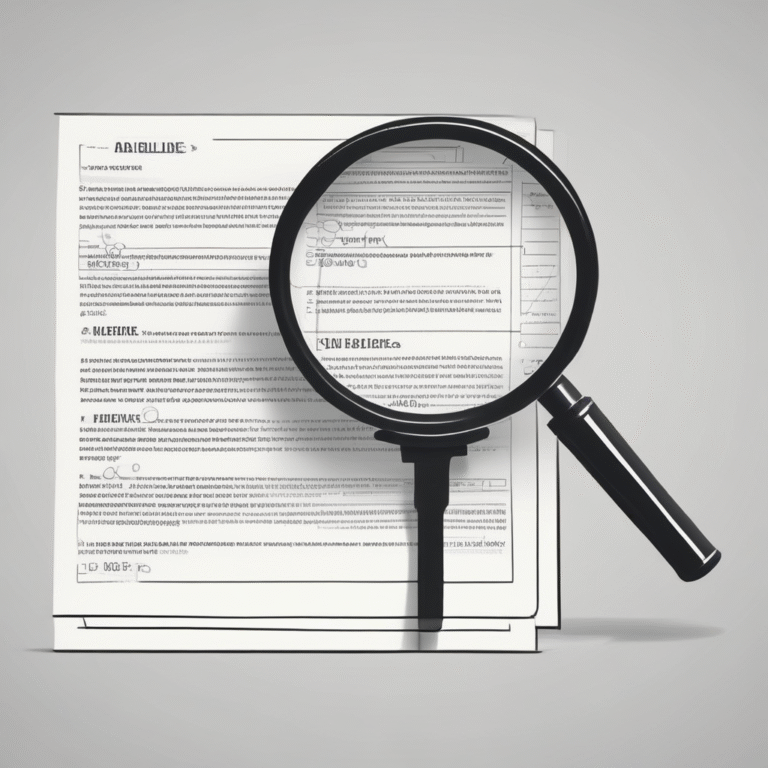Introduction to Personalized Compliance Solutions
In today’s dynamic business landscape, regulatory pressures are intensifying, making personalized compliance solutions more critical than ever. As organizations grapple with complex regulatory environments, leveraging AI technology becomes essential. Compliance AI, an innovative approach utilizing artificial intelligence, is revolutionizing how businesses adhere to regulations by offering tailored solutions based on unique risk profiles and compliance histories.
Overview of Compliance Challenges
Regulatory environments are becoming increasingly complex, with varied rules and standards across industries and regions. This complexity necessitates personalized compliance strategies that can adapt to an organization’s specific needs and risks. Traditional compliance methods often fall short due to their inability to accommodate diverse regulatory demands efficiently.
Role of AI in Compliance
AI enhances compliance by automating routine tasks, reducing manual effort, and minimizing errors. It provides personalized solutions that help organizations stay ahead of regulatory changes. By integrating AI into compliance processes, businesses can achieve greater efficiency and accuracy, ultimately leading to improved regulatory adherence.
Understanding AI-Driven Compliance
Predictive Analytics for Compliance
Compliance AI employs predictive analytics to forecast compliance trends and identify potential risks. Tools like Centraleyes and Compliance.ai enable organizations to proactively address emerging compliance issues, ensuring they remain compliant with evolving regulations. By analyzing historical data and predicting future trends, these tools offer invaluable insights that guide compliance strategies.
AI-Enhanced Whistleblower Systems
Whistleblower systems powered by AI facilitate early detection of misconduct by analyzing reports and identifying patterns indicative of non-compliance. These systems promote a culture of integrity and transparency within organizations, reducing the likelihood of regulatory breaches and fostering trust among stakeholders.
Compliance Automation Software
AI-driven compliance automation software streamlines compliance processes by automating routine tasks, such as document reviews and reporting. This not only reduces the workload for compliance teams but also minimizes the risk of human error, ensuring more reliable compliance outcomes.
Real-World Examples and Case Studies
Case Study 1: AI in Anti-Money Laundering (AML) Compliance
A leading financial institution implemented AI tools to enhance its AML compliance processes. By leveraging machine learning algorithms, the institution was able to detect suspicious transactions more accurately and efficiently, significantly reducing the risk of regulatory penalties.
Case Study 2: AI for HIPAA Compliance in Healthcare
A healthcare organization utilized AI to ensure compliance with HIPAA regulations. The AI system monitored patient data access and usage, quickly identifying any unauthorized activities. This proactive approach not only protected patient privacy but also demonstrated the organization’s commitment to regulatory adherence.
Data Points
- Organizations utilizing AI for compliance report a 30% reduction in regulatory breaches.
- AI-driven compliance solutions can reduce compliance costs by up to 40%.
- Businesses that integrate AI into compliance processes experience a 25% increase in operational efficiency.
Technical Insights and Operational Frameworks
Step-by-Step Guide to Implementing AI in Compliance
- Assessing Organizational Risk Profiles: Identify and evaluate the specific risks faced by your organization to tailor compliance solutions effectively.
- Integrating AI Tools: Seamlessly incorporate AI technologies into existing compliance frameworks to enhance operational efficiency.
- Monitoring and Updating Compliance Strategies: Continuously review and refine compliance strategies to align with changing regulations and business needs.
Technical Explanations
AI technologies such as machine learning and natural language processing (NLP) play a pivotal role in compliance. Machine learning algorithms analyze vast amounts of data to identify compliance risks, while NLP helps in understanding and processing regulatory texts, ensuring accurate interpretation and application.
Actionable Insights and Best Practices
Best Practices for Implementing AI in Compliance
- Continuous Monitoring and Adaptation: Regularly update AI systems to reflect the latest regulatory changes and organizational requirements.
- Integration with Existing Systems: Ensure that AI tools are compatible with current compliance infrastructure to maximize their effectiveness.
- Training Compliance Teams: Equip compliance teams with the necessary skills to utilize AI tools effectively, enhancing their ability to manage compliance processes.
Frameworks and Methodologies
Popular compliance frameworks such as SOC 2 and GDPR can be supported by AI, ensuring that organizations meet stringent regulatory standards. AI tools help automate compliance checks and provide real-time insights, simplifying the compliance journey.
Challenges & Solutions
Common Challenges in AI Adoption for Compliance
- Data Quality Issues: Inaccurate or incomplete data can hinder AI’s ability to provide reliable compliance solutions.
- Regulatory Uncertainty: Constantly evolving regulations can create challenges in maintaining compliance.
- Resistance to Change: Organizational resistance to adopting new technologies can impede AI implementation.
Solutions to Overcome Challenges
- Ensuring Data Integrity: Implement robust data management practices to maintain high data quality.
- Staying Updated on Regulatory Changes: Regularly monitor regulatory developments to ensure compliance strategies remain relevant.
- Change Management Strategies: Develop comprehensive change management plans to facilitate smooth AI adoption.
Tools, Platforms, and Solutions
Overview of Key AI Compliance Tools
- Centraleyes: Offers an AI-powered risk register that automates risk mapping to controls.
- Compliance.ai: Provides real-time monitoring of regulatory changes and predictive analytics.
- Kount: Utilizes AI for fraud detection and compliance monitoring across industries.
Custom Compliance Frameworks
Platforms like Akitra and Strike Graph offer tailored compliance solutions, allowing organizations to develop custom frameworks that align with their specific needs and regulatory requirements.
Latest Trends & Future Outlook
Recent Industry Developments
Regulatory bodies such as the SEC and FTC are increasingly utilizing AI to enhance their oversight capabilities. By adopting AI-driven tools, these agencies can better monitor compliance and enforce regulations more effectively.
Upcoming Trends
The future of compliance AI looks promising, with anticipated advancements such as the increased use of generative AI for compliance documentation and the integration of emerging technologies like blockchain and quantum computing. These innovations are expected to further transform compliance processes, offering even more personalized and efficient solutions.
Conclusion
As regulatory pressures continue to mount, the need for personalized compliance solutions becomes more pressing. Compliance AI is transforming the compliance landscape by offering tailored, efficient, and accurate solutions that help businesses navigate complex regulatory environments. By embracing AI technology, organizations can not only enhance their compliance efforts but also gain a competitive edge in their respective industries. The integration of AI in compliance is poised to reshape the future of regulatory adherence, ensuring that businesses remain compliant and resilient in an ever-evolving world.










